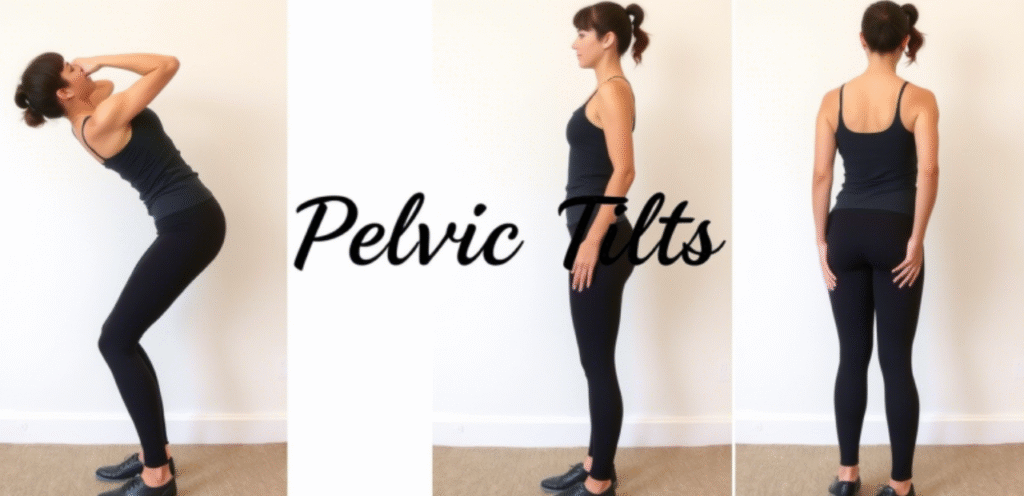If you’re dealing with diastasis recti, it’s important to focus on exercises that help strengthen and heal the abdominal muscles without putting excessive strain on them.
Diastasis recti, a condition where the abdominal muscles separate, is common during and after pregnancy, but it can affect anyone.
Fortunately, there are safe core abs exercises designed to repair and restore strength in the abdominal area. In this article, we’ll explore 7 effective exercises specifically tailored for diastasis recti repair.
What Is Diastasis Recti?

Diastasis recti occurs when the two halves of the rectus abdominis muscle, which runs down the middle of your abdomen, separate.
This can create a noticeable gap in the middle of your belly. It’s often seen in postpartum women, but it can also be caused by obesity, heavy lifting, or excessive pressure on the abdominal wall.
The good news is, with the right exercises, you can gradually heal and restore core strength. Below are 7 safe and effective exercises for diastasis recti repair.
1. Pelvic Tilts

Pelvic tilts are one of the best starting exercises for diastasis recti as they help engage the core muscles without putting pressure on the abdominal separation.
How to do it:
- Lie on your back with your knees bent and feet flat on the floor.
- Tighten your core and tilt your pelvis toward your belly button.
- Hold for a few seconds and then release.
- Repeat 10-15 times.
Benefits:
Pelvic tilts help to activate the deep core muscles and improve pelvic alignment.
2. Modified Plank
Planks are great for core strength, but they can be tough on the abdominal muscles in the early stages of diastasis recti. A modified plank with your knees on the floor is a safer alternative.
How to do it:
- Start in a push-up position, but with your knees on the ground.
- Keep your body in a straight line from head to knees.
- Engage your core and hold for 10-20 seconds.
- Repeat 3-5 times.
Benefits:
This modification builds core strength without placing undue stress on the abdominal muscles.
3. Dead Bug
The dead bug exercise is ideal for improving core stability and coordination while minimizing the risk of straining the abdominal muscles.
How to do it:
- Lie on your back with your arms extended straight above your chest and knees bent at 90 degrees.
- Slowly extend your right arm overhead while straightening your left leg out, keeping your lower back pressed into the floor.
- Return to the starting position and repeat with the other arm and leg.
- Perform 10-15 reps on each side.
Benefits:
The dead bug exercise helps activate both the lower and upper abdominal muscles while minimizing stress on the diastasis recti gap.
4. Kegel Exercises
While Kegels are typically known for strengthening pelvic floor muscles, they also play an important role in supporting core stability, especially after pregnancy.
How to do it:
- Sit or lie down comfortably.
- Contract your pelvic floor muscles (as if you’re stopping the flow of urine).
- Hold for 5-10 seconds, then relax.
- Repeat 10-15 times.
Benefits:
Kegels improve pelvic floor strength, which supports the entire core and aids in the repair of diastasis recti.
5. Heel Slides
How to do it:
Heel slides are a gentle yet effective exercise that strengthens the lower part of the abdomen and encourages proper core engagement.
- Lie on your back with your knees bent and feet flat on the floor.
- Slowly slide your right foot out while keeping your knee straight.
- Bring your foot back to the starting position and repeat with your left leg.
- Perform 10-15 reps on each side.
Benefits:
Heel slides target the lower abs and help with pelvic stability, promoting diastasis recti healing.
6. Bridge Pose
The bridge pose is another great exercise to activate your core, glutes, and pelvic muscles while promoting abdominal healing.
How to do it:
- Lie on your back with your knees bent and feet flat on the floor.
- Press your feet into the ground and lift your hips toward the ceiling.
- Hold for 3-5 seconds, then slowly lower back down.
- Repeat 10-15 times.
Benefits:
This exercise strengthens the glutes and core while promoting proper alignment and improving pelvic stability.
7. Standing Core Activation
This is a low-impact exercise that focuses on gently activating the deep core muscles, which is important for those recovering from diastasis recti.
How to do it:
- Stand tall with your feet hip-width apart.
- Inhale deeply, then exhale while gently drawing your navel towards your spine (this activates the deep core muscles).
- Hold for a few seconds and repeat for 10-15 breaths.
Benefits:
Standing core activation is a great way to strengthen the deeper layers of the abdominal muscles, essential for diastasis recti repair.
Tips for Healing Diastasis Recti
- Focus on Core Activation: When performing exercises, always focus on activating your core and avoiding pressure on the abdominal muscles.
- Avoid Crunches: Traditional crunches can put strain on the abdominal muscles and worsen diastasis recti.
- Work with a Professional: It’s always a good idea to consult with a physical therapist or fitness expert specializing in diastasis recti for personalized guidance.
Conclusion
Healing diastasis recti requires patience and consistent effort. Incorporating these 7 safe core abs exercises into your routine can help repair the abdominal separation and restore core strength over time. Always remember to listen to your body and modify exercises as needed. With dedication and the right approach, you can achieve a stronger, healthier core!

Emily Rose Johnson is a passionate writer with a knack for crafting engaging content. She specializes in communication strategies, digital marketing, and creative storytelling.









